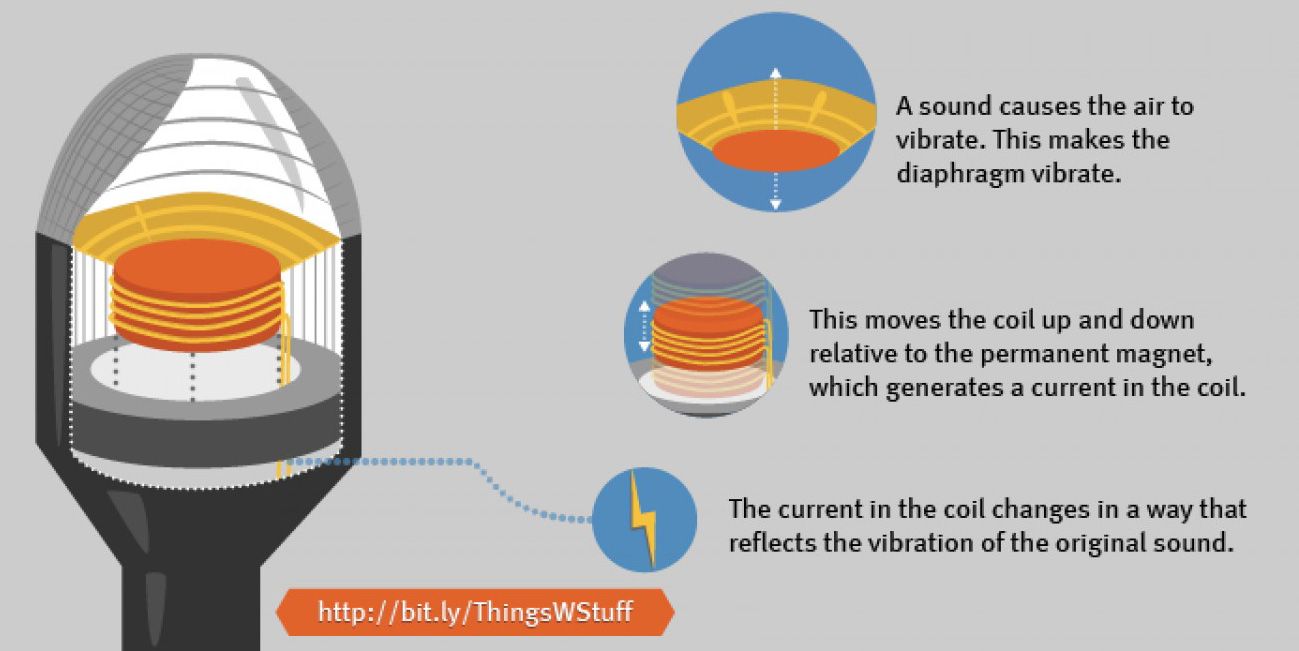"Analog" is one of those words that started with one meaning ("something similar or comparable to something else") but has been eclipsed by an entirely new meaning ("not computerized"). With analog communications, we basically mean non-digital radios.
— James Albright

Updated:
2017-09-15
Understanding the basics of analog communications will help you understand all the forms of communications that follow:

Analog Communications
To understand analog communications, first consider the humble microphone. It is basically a flexible diaphragm that moves in and out in response to sound waves. The diaphragm is connected to a spiral of wires in a cylinder that moves up and down a magnet. That creates an electrical signal that changes in voltage depending on how far in the diaphragm is deflected. So what you end up with is a wire that holds varying amounts of electricity that reflect the tone of the sound.
At the end of the wire you construct a speaker, which is basically the opposite of a microphone. The wires are wrapped around another magnet and the voltage in the wire. The coil of wires are attached to another diaphragm which moves up and down as the voltage in the wire varies. That pulsating diaphragm generates sound.
There are a lot of problems with this system:
- The amplitude of the sound generated diminishes with distance, so the longer the wire the weaker it becomes unless you boost it.
- The quality of the sound reproduction depends greatly not only the quality of the microphone and speaker set up, but also on the wires and whatever amplifiers you use to maintain the voltage over distance.
- You need wires, lots and lots of wires. And the more wires you have, the more you need to amplify the signal.
- To share the signal, you need more wires and more amplifiers.
- Storing the analog signal use to require other analog devices, such as tape or vinyl. Each of these increased the "noise" and decreased the quality.
- Routing the signal from where it is generated to where it was needed required vast arrays of switches.
In the earliest days of "switched" phone systems, around 1880, you had an operator who simply pulled the line from one user and pushed it into the socket of another user. Each of these connections introduced more opportunities for noise from dirty connections and worn wires. If the operator was busy (or absent), the connection wasn't made.
Automatic phone switchboards replaced operators with electronic relays. The systems required a dial from the sender which interrupted the signal in a series of pulses. Relays at the switchboard would essentially count the interruptions and turn those into numbers. The numbers added up to a destination for the call and a series of relays would connect until the caller was connected to the receiver. This normally worked for a limited number of phones and anything beyond that series of relays required a human operator to connect the call to another system where automatic relays could make the final connection. Each of these relays presented yet another opportunity for noise and dropped calls.
All of this started to change in the 1960s: Digital Communications


